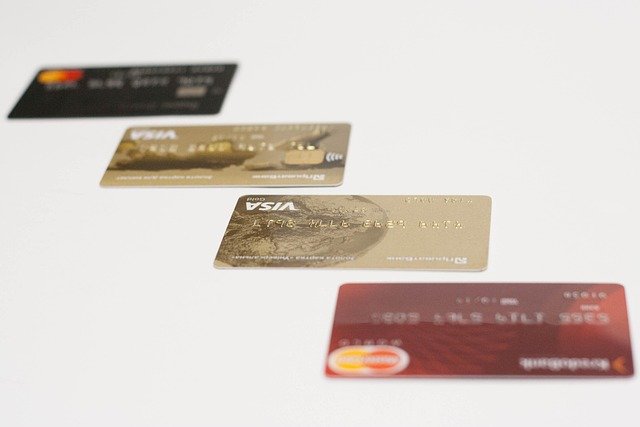Credit Card Rewards Explained: Choosing the Right Program for Your Spending Habits
Not all credit card rewards are created equal. Whether you prefer travel perks, cash back, or flexible points, understanding how different programs work can help you choose a card that aligns with your day-to-day spending. This guide breaks down the essentials.

Cash Back vs Travel Rewards Cards: Understanding Your Options
The fundamental choice in rewards credit cards comes down to cash back versus travel rewards programs, each offering distinct advantages depending on your preferences and spending patterns. Cash back cards provide straightforward value by returning a percentage of your purchases as credits or cash payments, typically ranging from 0.5% to 2% on general purchases, with higher rates for specific categories.
Travel rewards cards, conversely, allow you to accumulate points or miles that can be redeemed for flights, hotel stays, and travel-related expenses. These programs often provide higher potential value per dollar spent, particularly for frequent travellers who can maximise redemption opportunities. However, travel rewards require more active management and understanding of program rules to achieve optimal value.
The choice between these options largely depends on your travel frequency and preferences for simplicity versus maximum potential value. Cash back suits those who prefer immediate, tangible returns without the complexity of redemption strategies, while travel rewards appeal to those willing to invest time in understanding program nuances for potentially greater benefits.
Matching Credit Card Rewards to Spending Categories
Successful rewards optimisation requires aligning your card’s bonus categories with your actual spending patterns, as many programs offer enhanced earning rates for specific purchase types. Common bonus categories include groceries, fuel, dining, utilities, and online shopping, with earning rates often reaching 2-4 times the standard rate.
Analysing your monthly expenses helps identify which categories represent your largest spending areas and, consequently, where bonus earning rates would provide the most value. Some cardholders benefit from multiple cards targeting different spending categories, though this approach requires careful management to avoid annual fees outweighing rewards earned.
Consider seasonal variations in your spending when evaluating category bonuses, as some programs offer rotating quarterly categories while others maintain fixed bonus rates year-round. The key is ensuring the categories align with your consistent, ongoing expenses rather than occasional purchases.
Factors to Consider When Choosing a Rewards Program
Beyond earning rates and categories, several critical factors influence the overall value proposition of rewards programs. Annual fees represent a significant consideration, as they directly impact your net benefit calculation and must be offset by rewards earned to justify the expense.
Redemption flexibility affects how easily you can access your rewards value, with some programs offering multiple options while others restrict redemptions to specific partners or categories. Point expiration policies vary significantly between programs, potentially affecting long-term value for infrequent redeemers.
Additional program features such as complimentary insurance coverage, airport lounge access, and purchase protection can add substantial value beyond the core rewards earning. These benefits often justify annual fees for eligible users, particularly frequent travellers who would otherwise purchase these services separately.
Credit limit requirements and eligibility criteria also influence program accessibility, as premium rewards cards typically require higher income levels and credit scores. Understanding these requirements helps focus your research on realistic options for your financial situation.
| Card Type | Provider | Annual Fee | Earning Rate | Key Features |
|---|---|---|---|---|
| Cash Back | Commonwealth Bank | $99 | 1-3% categories | No expiry, quarterly bonuses |
| Travel Rewards | ANZ | $225 | 1-2 points/$1 | Airport lounge, travel insurance |
| Premium Travel | Westpac | $395 | 2-3 points/$1 | Concierge, status credits |
| No Fee Cash Back | NAB | $0 | 0.5-1% | Simple structure, no complexity |
Prices, rates, or cost estimates mentioned in this article are based on the latest available information but may change over time. Independent research is advised before making financial decisions.
Maximising Value Through Strategic Usage
Once you’ve selected an appropriate rewards program, strategic usage patterns can significantly enhance your earning potential and overall value realisation. This includes timing large purchases to coincide with bonus earning periods, utilising shopping portals for online purchases, and taking advantage of promotional offers.
Understanding redemption strategies becomes crucial for travel rewards programs, where flexibility in travel dates and destinations can dramatically impact the value received per point. Cash back programs offer more straightforward value realisation but may provide opportunities for bonus redemptions during promotional periods.
Regular program evaluation ensures your chosen card continues meeting your needs as spending patterns and life circumstances evolve. This might involve switching programs, adding supplementary cards, or adjusting usage strategies to maintain optimal value.
Making Your Final Decision
Choosing the right credit card rewards program ultimately depends on balancing earning potential with program complexity, annual costs, and your personal preferences for reward types. The most valuable program on paper may not be the most suitable for your specific situation and spending habits.
Consider starting with a simpler program to understand how rewards credit cards fit into your financial routine before potentially moving to more complex, higher-earning options. Remember that responsible credit usage remains paramount, as interest charges can quickly negate any rewards earned if balances aren’t paid in full monthly.




